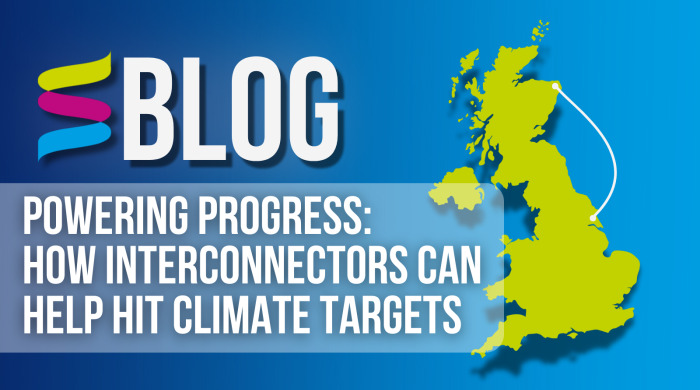Powering Progress: How interconnectors can help hit climate targets

Maximising Scotland’s offshore wind potential and meeting national climate targets is reliant on resilient and dependable transmission routes that will be vital for transporting clean power throughout the country.
Bold transmission infrastructure, such as offshore interconnectors, will play a vital role in exporting Scotland’s abundant renewable energy to the rest of the UK and supporting the government’s ambition of delivering 50GW of offshore wind capacity by 2030.
Ofgem’s approval on Tuesday (August 13) of SSEN and National Grid’s joint interconnector venture, Eastern Green Link 2 (EGL2), is the first of four EGL planned interconnectors and the first project to receive Accelerated Strategic Transmission Investment (ASTI) approval. Collectively, the EGLs will transport a cumulative 8GW of renewable energy from dense sources of generation to consumers in the south, forming an ‘electrical super-highway’.

Source: Eastern Green Link 2
At an investment of more than £4 billion, EGL2 is the largest ever single investment in the UK’s transmission system and will play a critical role in delivering UK and Scottish Government’s clean power and energy security targets, supporting thousands of jobs across the country and boosting local and national economies.
Being such sizeable infrastructure projects, interconnectors also offer large economic benefits as part of their delivery. In Scotland, Sumitomo’s £350 million investment in a new subsea cable manufacturing plant based at the Port of Nigg will help to meet future demand for interconnector cabling. In addition, interconnectors help to reduce the cost of constraint payments by increasing the capacity of the network and reducing costs to consumers.
Outside of domestic use, interconnectors also enable the UK to trade zero-carbon energy with neighbouring countries to maximise the use of the continent’s clean energy resources. International interconnectors bolster the UK’s security of supply to ensure demand is met even when domestic renewable production is low, while keeping domestic rates competitive, meaning better value for consumers.
But interconnectors are not without their limitations and as such, can only be used where the benefits outweigh the challenges.
The largest barrier to interconnectors is their price. Due to the specialist equipment, manpower and conditions required to install subsea cables, interconnectors can reach up to eight* times the price of overhead line pylons.
Aside from cost, interconnectors rely on components that are highly sought after for renewables projects around the globe and as such, securing the physical components for such projects can prove difficult. Developing domestic manufacturing capabilities, in addition to the Sumitomo facility, will help lessen the UK’s dependence on constrained, international supply chains.
In terms of security of supply, subsea cables have a much longer repair time if a fault occurs on the line due to the difficult access and specialist equipment required. Reparation of subsea cabling is a complex process and issues can take months to resolve compared to as little as a few hours to fix overhead line pylons. The four EGLs will help to reinforce the reliability of the Eastern interconnector network, and allow for the increased capacity of supply from north to south.
Ultimately, interconnectors for domestic and international use will play a key role in supporting our green energy ambitions while simultaneously offering considerable economic gains.
Scottish Renewables recognises the incredible importance of such large-scale links between Scotland, the UK and internationally and welcomes key infrastructure, such as EGL2, that will allow us to capitalise on our abundance of natural resources for the benefit of everyone.
*when considering lifetime cost for a 75km 6,380 MVA / 6,000 MW transmission route.
- Find out more information on the Eastern Green Link 2 website.
Blog by Holly Thomas, Grid & Systems Policy Manager